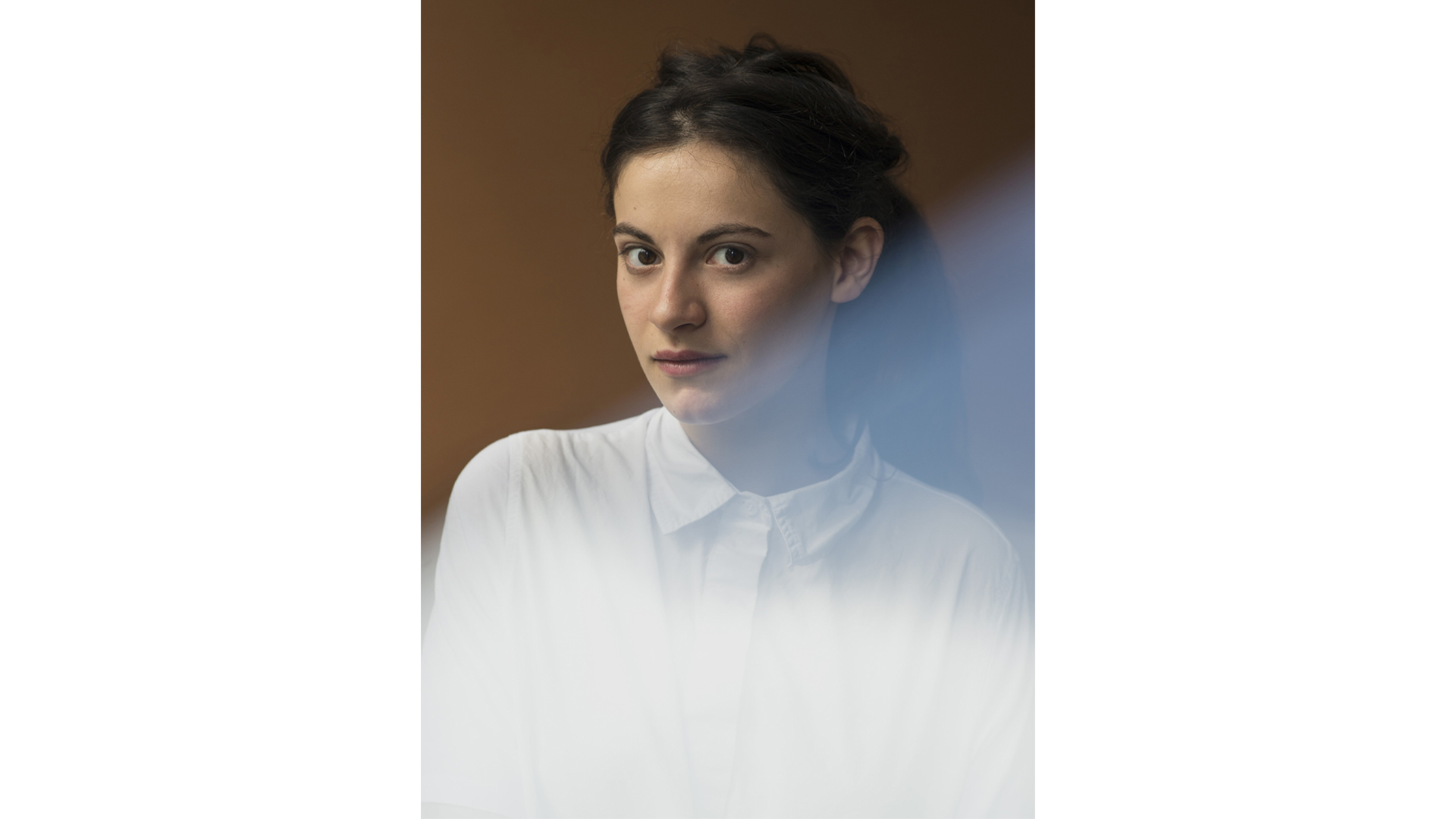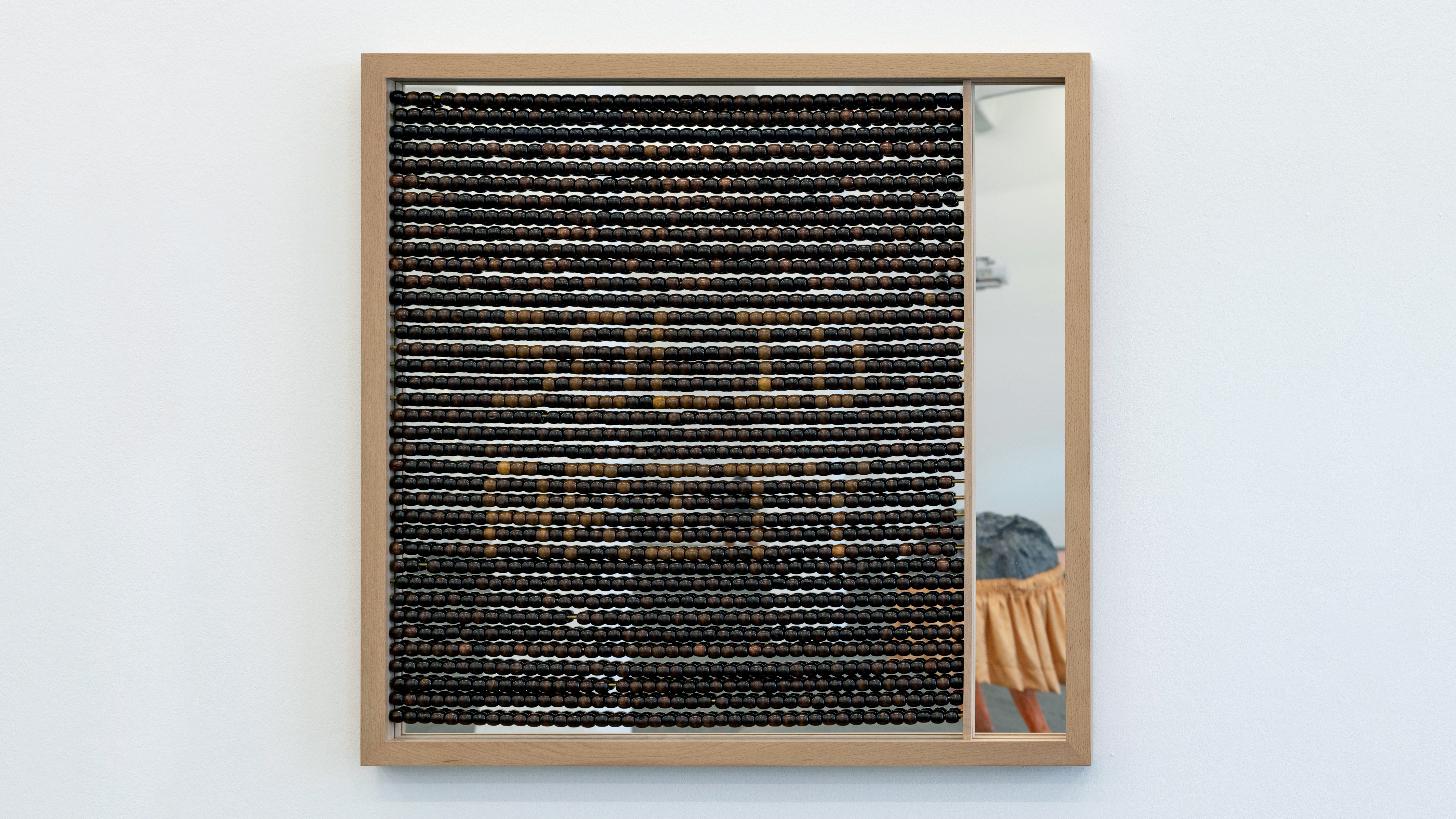Gina Proenza: Words Count

What do we tell each other? How do we talk to others? Which words do we use, and what do they ‘do’? In her work, artist Gina Proenza repeatedly turns to questions like this – questions of understanding, communication, language, and power. Because it quite literally matters, what stories we tell and how we use words.
To modern ears, the medieval story grounding artist Gina Proenza’s solo show at the Musée cantonal des Beaux-Arts de Lausanne sounds quite absurd: putting worms on trial for the damage they’ve done to the crops, going to the fields, issuing an ultimatum to these animals; and using Latin words to do so. ‘Thou and thy company’, the humans said to the worms, ‘have created considerable damage to the soil: you have six days to vacate the premises.’
Of course, the worms remain where they are, devastating the crop day after day. But having addressed them and talked to them, the humans can now legitimately issue a fully fleshed lawsuit before the local ecclesiastical court. Accusation lawyers raise the case, defendant lawyers stand in for the accused. Pleas are given, for and against, and speeches delivered. In the end, the worms, themselves absent from the trial but judged by it, are sentenced to leave the fields for good.
The Two Sides of Language
As absurd as it sounds at first, such trials against animals – like that one from the diocese of
Lausanne – were not entirely uncommon around 500 years ago. ‘I was immediately drawn to this case’,
Proenza, who is based in Lausanne herself, tells me over the phone when I reach her in Paris, where she
currently spends some time for a residency, ‘Especially because these trials were not held against an
individual animal, but against an entire species; one that is in the ground and therefore basically
invisible – easy to judge, and easy to be used to invoke fear.’
But she is not only drawn to that case because of the logic of blaming or scapegoating, or the mechanics of fearmongering and a supposed defence of what cannot be understood that is as active today, as it was back then. ‘This story’, Proenza says, ‘also relates directly to other topics highly relevant today: questions of co-habitation between species, humans and non-human animals.’ How, in fact, can we not only talk to each other, but with other species?
Like here, Proenza, who was born in Bogotá, Colombia, and grew up in France and Belgium before moving to Lausanne to study at the art academy ECAL, repeatedly turns to questions of language and communication in her work – specifically looking for moments of ambivalence. ‘Language’, she says, ‘can be a tool of emancipation as well as of authority.’ As for language is a system that may come with a powerful ability to define, pin down and fixate, yet is inherently and necessarily flexible and movable.
Film Sets and Calculating Machines
Words and their use, as well as concrete stories, form the reference point or narrative backbone of many
of Proenza’s visual works. For the artist, who won the Helvetia Art Prize in 2018 and just got awarded
the Manor Art Prize 2024 Vaud, stories like the one of the Lausanne worm trials seem to function like a
script organising her exhibitions. For the exhibition at the Musée cantonal des Beaux-Arts de Lausanne,
for example, Proenza not only took the title ‘Toi et ta bande’ (You and your company) directly from the
archives but also re-staged the medieval trial with real lawyers. A resulting audio recording fills the
room like a voice-over. Additionally, some of the words from the trials are projected onto a curtained
wall, like a subtitle of sorts. Both stylistic devices refer to the movie world – and indeed, the
exhibition room with Proenza’s architectural interventions starts reminding a film set or a theatre
stage where her sculptural works seemingly act as props.
Proenza uses a different approach to make the power of words visible for an ongoing series of wall-mounted works, some of which are also on view in Lausanne. Here, the artist turns to the abacus, an age-old calculation machine with moving pearls. She fills the horizontal lines of pearls up to the frame. The movement is now blocked, and the calculating function of the device is effectively rendered useless. With pearls in different colours, Proenza then ‘writes’ words into these frames that often carry some double meaning – ‘Moving’ reads one work, for example, or another one, this time one from the Julius Baer Art Collection: ‘Solidarity’. These perfectly simple pieces hint directly at the ambivalent nature of language, of words – determining, yet consistently exceeding, almost betraying themselves; flexible and moving, yet also fixating. Every word, quite literally, counts.
 Gina Proenza (b. 1994), ‘Solidarity’, 2023, wood, brass and mirror, 83 x 81 cm, courtesy the artist and Julius Baer Art Collection
Gina Proenza (b. 1994), ‘Solidarity’, 2023, wood, brass and mirror, 83 x 81 cm, courtesy the artist and Julius Baer Art Collection
Sticking out the Tongue
Another central strand of Proenza’s work is the relationship between language and the body. Just take
her long-standing series ‘L’Amie naturel’, gargoyle-like little sculptures with mechanically moving
tongues. The tongue is the embodiment of language, the literal grounding in a concrete body of something
as seemingly immaterial as words – a body making sounds, speaking. Proenza here is fascinated by the
multiple meanings and what escapes being fixated, but also by how the tongue stands in for that which
exceeds language itself: ‘Sticking the tongue out is a childish gesture as much as a sign of protest.
But then again, the tongue is utterly erotic’, she says. ‘The tongue always comes into play when
language itself is not enough.’
When asked – given that much of her interest lies in language – what made her become a visual artist rather than a writer or a playwright, Proenza immediately responds: ‘I love the fact that exhibition spaces allow for stories not having to be told in a linear way, with a beginning and an end. An exhibition is much more like an open lecture.’ And in regard to the role of the spectators, she adds: ‘Within the exhibition space. You have to move around to see an exhibition to get it.’ And there it is again – movement, flexibility; in other words: freedom.
Author: Dominikus Müller
‘Gina Proenza. Toi et ta bande’, Manor Art Prize 2024 Vaud, Musée cantonal des Beaux-Arts, Lausanne, until 1st September 2024